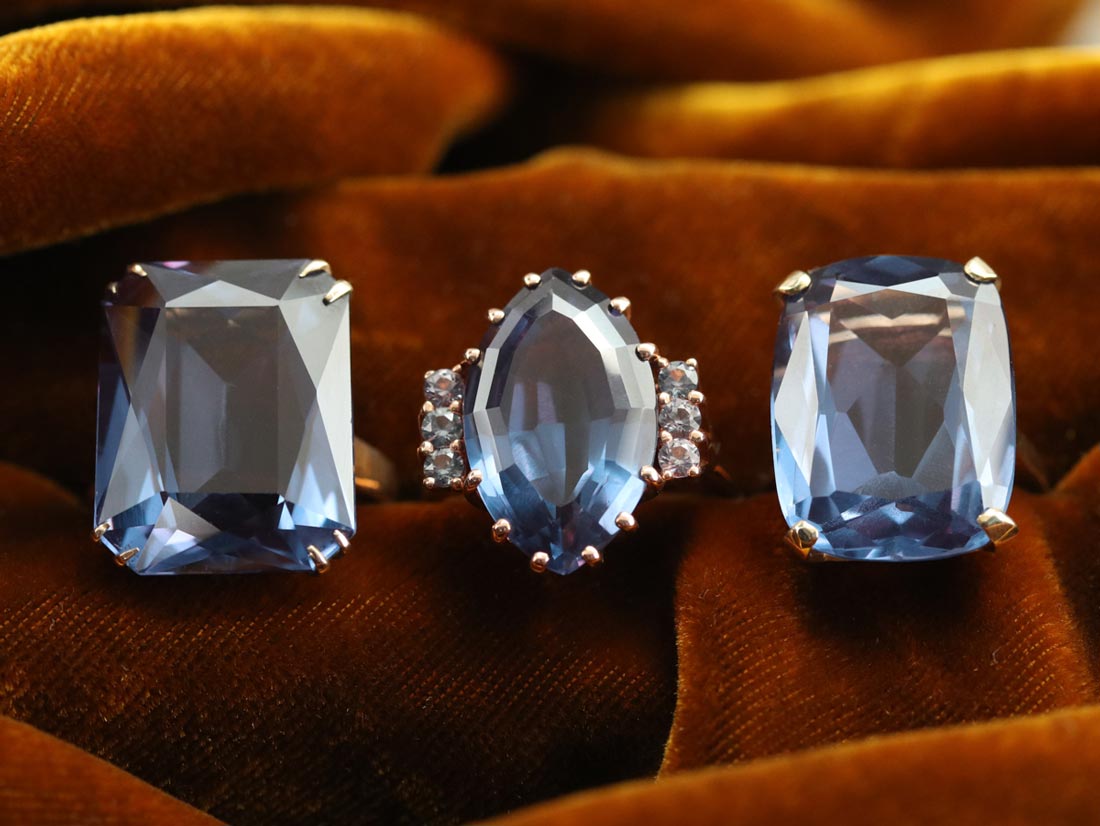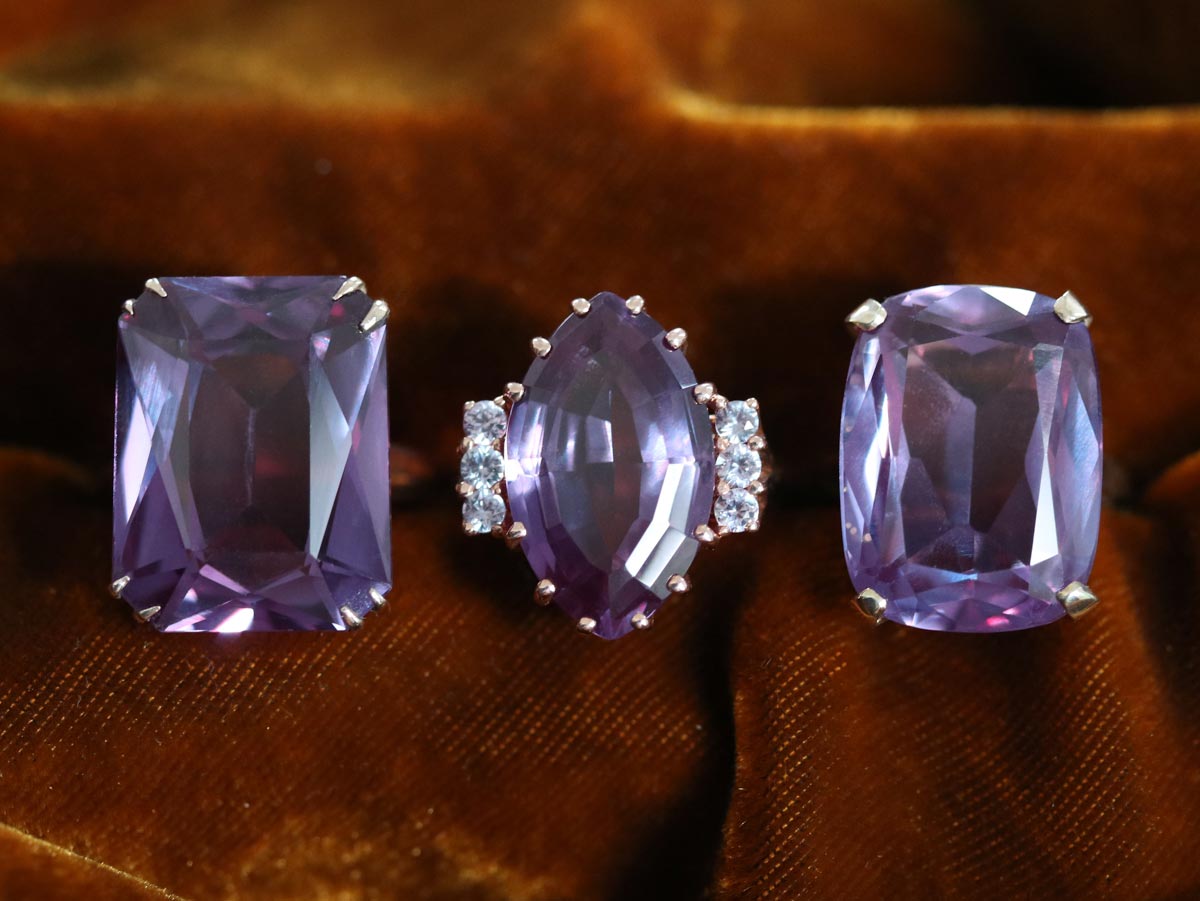15% Off Flower Designs 4/27-5/11 | Discount applied at checkout
15% Off Flower Designs 4/27-5/11 | Discount applied at checkout
15% Off Flower Designs 4/27-5/11 | Discount applied at checkout
15% Off Flower Designs 4/27-5/11 | Discount applied at checkout
Add description, images, menus and links to your mega menu
A column with no settings can be used as a spacer
Link to your collections, sales and even external links
Add up to five columns
Add description, images, menus and links to your mega menu
A column with no settings can be used as a spacer
Link to your collections, sales and even external links
Add up to five columns
September 26, 2019 3 min read
Known as “emerald by day, ruby by night", alexandrite is perhaps the most coveted of all the color-changing gemstones. Is it green or blue? Purple or red? The answer is all of the above! Though natural alexandrite is now very rare, there are still ways to enjoy its unique properties.
Alexandrite is a rare, color-changing variety of chrysoberyl. Falling 8.5 on the Mohs hardness scale, its durability makes it a good choice for use in jewelry. Alexandrite is usually eye-clean with no visible inclusions. However, alexandrite’s most impressive characteristic is the colors it displays.
This gem’s color is determined by what type of light it is under, an ability known as “the alexandrite effect”. In natural and fluorescent light, alexandrite can range from green to greenish blue, but under incandescent or candle light, it can appear purple to purplish red. Trace impurities of chromium, the same mineral found in emeralds, give alexandrite its green hue, so it is easy to understand why early discoverers of the gem mistook it for emerald.


The top photo shows synthetic alexandrite rings viewed in daylight, while the bottom photo shows the same rings viewed under incandescent light.
Another fascinating aspect to alexandrite is that although it is highly pleochroic (displays different colors when viewed from different angles), this characteristic is not what gives the gem its color-changing ability. It is alexandrite’s unique light-absorbing and light-reflecting abilities that causes the change from green to purple. Being both responsive to light changes and strongly pleochroic makes alexandrite a fabulous gemstone to wear in jewelry.
The video below of synthetic alexandrite earrings shows both the blue-green and purple colors of the stone.
There was a time when alexandrite was available in abundance. In 1830, the gemstone was discovered in the Ural Mountains of Russia, a region known for extraordinary gem specimens. Named after heir to the throne Alexander II, alexandrite rose to prominence in part for its red and green hues, the same colors of the Russian military. The Ural Mountains were eventually depleted of alexandrite, and now the gem is mined in Brazil, Sri Lanka, and East Africa. Most of the specimens found in these mines, however, do not match the exceptional quality of those early Russian gems.
Since natural alexandrite is so rare, much of the alexandrite found in jewelry today is synthetic. Synthetic means the gem was grown in a lab under controlled conditions, rather than forming in nature. Synthetic gems contain either similar or the same mineral composition as their natural counterparts, and therefore will typically have the same properties. Like natural alexandrite, synthetic alexandrite changes color depending on the light it is under.

At Market Square Jewelers, we come across natural alexandrite from time to time, but it tends to sell quite quickly because of its rarity. Therefore, most of the alexandrite in our jewelry is synthetic (we always specify when an alexandrite gemstone is synthetic). All of the jewelry you see in these photos contains synthetic alexandrite. Many people shy away from lab grown gemstones, but as you can see, what they lack in pedigree, they make up for in beauty. The technological advances of synthetic gemstones allows many more people to enjoy the breathtaking properties of alexandrite at a much more accessible price point. In addition, you can find synthetic alexandrite in much higher carat weights. Natural alexandrite over three carats is extremely rare and would fetch a very high price, so be wary of any dealer claiming to sell large specimens of natural alexandrite.
If you'd like to enjoy the color changing properties of alexandrite yourself, shop our synthetic alexandrite jewelry here.
September 17, 2021 2 min read
July 26, 2021 4 min read
June 29, 2021 9 min read
Get 10% off your next purchase!

Get 10% off when you sign up for our newsletter!